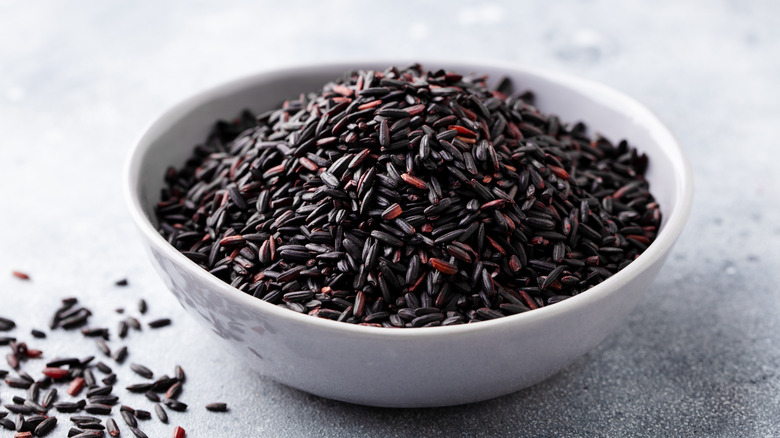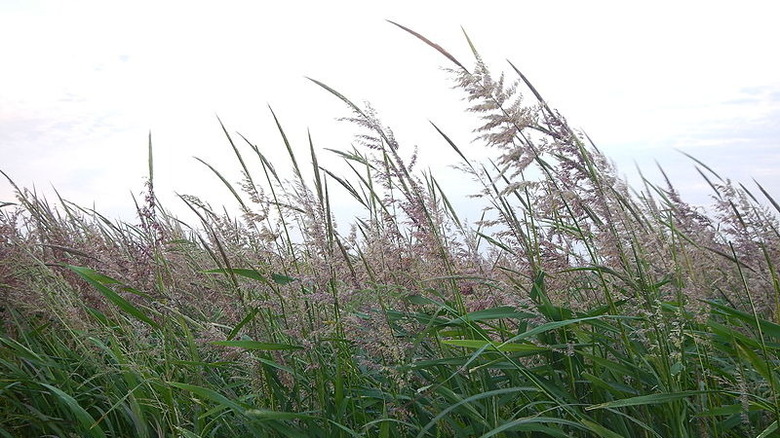Wild Rice Is Not Actually Rice. Here's What It Really Is
It's impossible to get a consensus of opinion on anything, especially matters of taste, but one food staple has gotten as close as you can get to universal popularity: rice. This humble grain is cultivated by humans on every continent except for Antarctica, according to the New York Academy of Sciences, which says that rice is the staple food for more than half the world's population. Virtually every culture has its own twist on rice, from Indian biryani and Italian risotto to Spanish paella and whatever San Francisco is up to with that Rice a Roni thing.
Unfortunately, while rice dominates global cuisine, even though it has less to offer in the way of nutritional value. The New York Academy of Sciences warns that rice is low in vitamins and minerals and that populations subsisting primarily on rice are more likely to suffer deficiencies of both. But there are some varieties that break the mold, most notably wild rice. It is renowned as the highest protein type of rice and, according to Healthline, contains a rich array of vitamins and minerals. Why is wild rice so different from other types? It begins with the fact that it isn't really rice.
Your 'wild' rice probably isn't wild either
Most types of rice eaten around the world belong to the plant species Oryza sativa. Per Masterclass, these varieties are sometimes called 'true rice.' Wild rice belongs to a separate, but related species called Zizania, so while true rice and wild rice are not directly related, you can think of them as cousins. Zizania is notable for being one of the very few grains native to North America, per Saveur, originating in the marshes of the upper Midwest where it has long been harvested by the native Ojibwe. However, only a small amount of wild rice these days actually comes from these wild wetlands.
According to ScienceDirect, wild rice was not cultivated in a farm setting until 1950, when the first commercial rice paddy opened in Minnesota. This was followed by a large-scale program at the University of Minnesota, and as a result, wild rice paddies exist in Minnesota, Wisconsin, Idaho, Oregon, and California, as well as a few other countries. Of course, the term 'wild rice paddy' is an oxymoron, and according to Saveur, residents of the Great Lakes region refer to most store-bought wild rice as 'paddy rice' to distinguish it from the wild grains the Ojibwe still harvest by hand. This term is a step closer to the truth, except for the part about rice.

